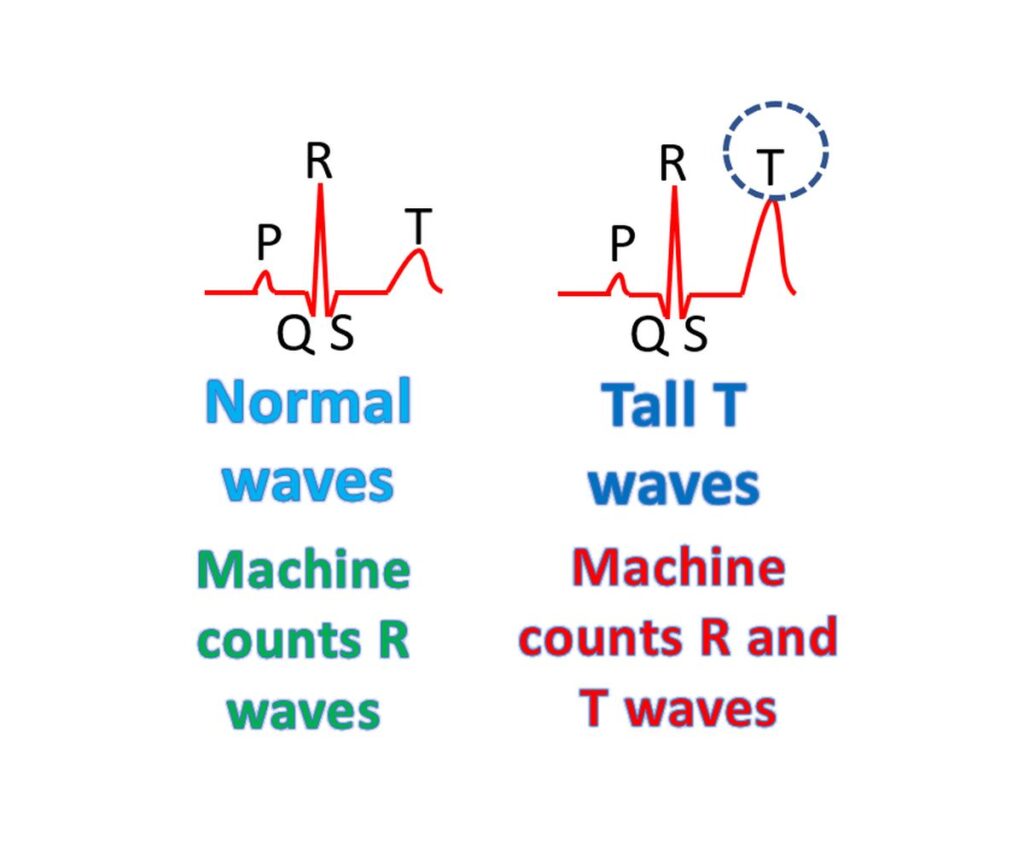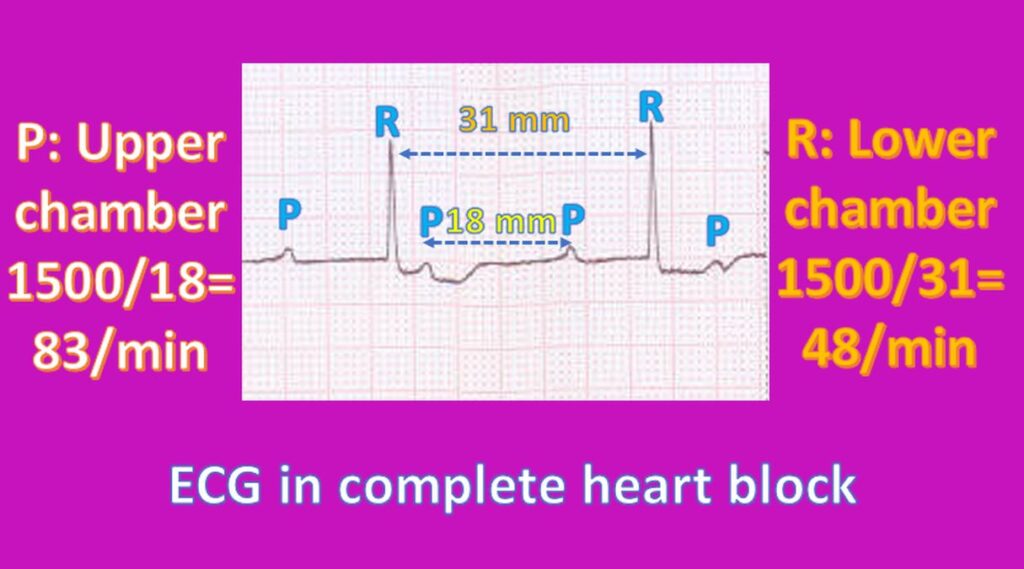How to check heart rate from the ECG?
How to check heart rate from the ECG?
Though heart rate can be easily checked using the stethoscope or by checking the pulse rate most of the times, in some situations you may need the help of an ECG strip. Pulse rate may be lower than heart rate when the rhythm is irregular and fast as in an abnormal rhythm originating from the upper chambers of the heart known as atrial fibrillation. When there is a fast heart rhythm, especially in small babies, it may be too fast to count it from the pulse or using the stethoscope. Normal heart itself is 140/minute in newborn babies. An abnormal heart rate may be much higher than 200/minute, which is difficult to check manually. In an intensive care setting when the cardiac monitor has been connected, it will automatically display the heart rate from the ECG. Most modern computerized ECG machines will also print the heart rate along with the ECG tracing. But it will be nice to know how to calculate heart rate from the ECG as errors can occur in machine calculation. This occurs when some waves are too tall that it may be counted as an additional heart beat by the machine. Sometimes when the waves are too small some may not be counted by the machine and it will display a low heart rate.

Similarly, while counting the pulse manually, some pulses may be weak in an irregular rhythm and not felt. This will lead to a falsely low heart rate being recorded.
Usual ECG recording is done at a paper speed of 25 mm/s. The speed will be printed at the bottom of the tracing in most cases. If it has been recorded at 50 mm/s or more, the calculation will have to be modified accordingly. When the paper speed is 25 mm/s, it would cover 1500 mm in a minute. The interval between two beats is measured by looking at the number of millimeters in the graph paper between two beats. If the interval is 15 mm, the heart rate will be 100/minute (1500/15 = 100).
While checking the rate from the ECG, we can also find out the rate at which the upper chambers or the atria are beating and the rate at which the lower chambers or ventricles are beating. Normally both chambers contract at the same rate in a sequential manner with upper chambers followed by lower chambers after a short delay.

But in some conditions like complete heart block (electrical block), when the electrical signals from the upper chambers are not conducted to the lower chambers, upper chambers work at a speed higher than that of the lower chambers. This can be seen in the ECG as more number of P waves representing the upper chambers than the number of QRS complexes representing the lower chambers. If the interval between two consecutive P waves is measured, we can calculate the rate of the upper chambers. The rate of the lower chambers can be measured by checking the interval between the QRS complexes. Usually the interval between the R waves is taken for this and is called the RR interval. Here while the upper chambers are beating at 83/min, lower chambers are beating only at 48/min which is the rate at which heart pumps out blood. The pulse rate will be only 48/min which is low. Normal range of pulse rate is 60 to 100/min.



